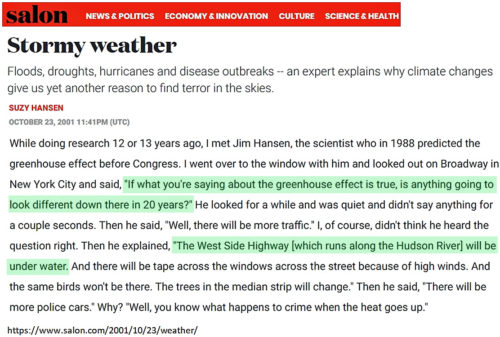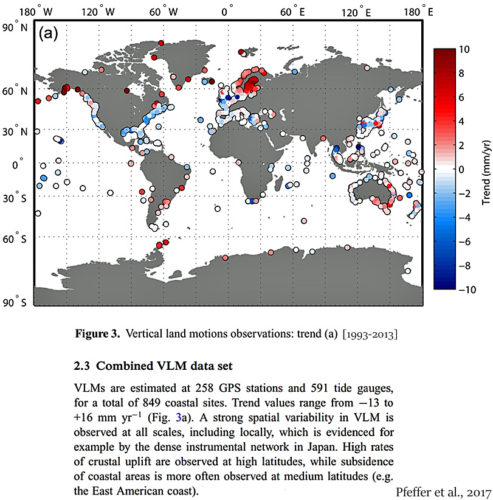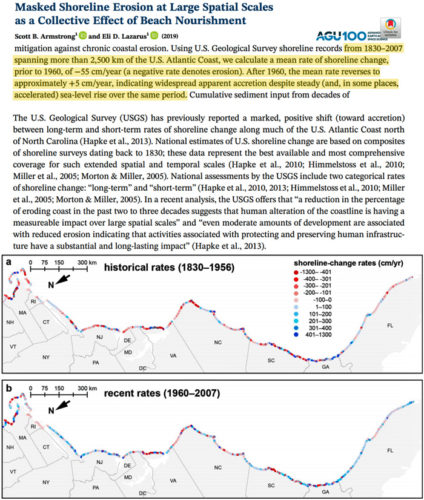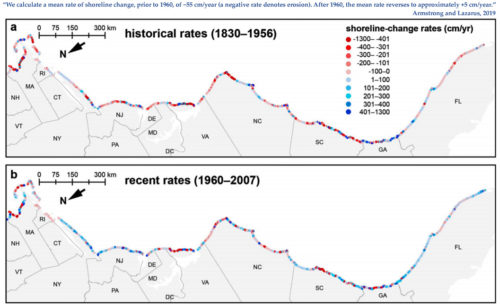Despite reports of relatively high regional rates of sea level rise, the Atlantic Coast of the United States has actually been expanding in recent decades after rapidly shrinking prior to the 1960s.
A 2001 Salon magazine “terror in the skies” alarmism article featured a Dr. James Hansen late-1980s prediction that New York City’s West Side Highway would be underwater within 20 years.

Of course, the West Side Highway is not underwater today.
Nor does it appear that there have been any detectable changes to its shoreline position since 1936.
In fact, outside the realm of popularized alarmism, it is well known that geological processes are more determinative of relative sea-level changes than climate factors contributing to sea level rise or fall (i.e., glacier melt or advance).
Piecuch et al. (2018) concluded: “the majority of large-scale spatial variation in long-term rates of relative sea-level rise on the US East Coast is due to geological processes that will persist at similar rates for centuries.”

Pfeffer and colleagues (2017) assessed 849 coastal sites and determined that geophysical processes, or vertical land motion (VLM) trends (ranging from −13 to +16 mm yr−1 ) “have been recognized as a dominant component of the total relative sea-level variations observed at coasts” at locations throughout the globe.

In a new paper, Armstrong and Lazarus (2019) indicate “trends in recent rates of shoreline change along the U.S. Atlantic Coast reflect an especially puzzling increase in accretion, not erosion.”
The numbers are really “especially puzzling” for those immersed in sea-level-rise alarmism.
From 1830 to 1956, shorelines eroded at the rapid rate of -55 cm per year on average. Since 1960, the U.S. Atlantic coast has been expanding (accretion) at a rate of +5 cm per year.
The authors seek to provide a “plausible” explanation for this “enigmatic pattern” by suggesting “beach nourishment” (infrastructure development) may explain the tendencies for shorelines to grow as sea levels rise.
For those who do not ascribe to sea-level-rise alarmism, the recent reversal to shoreline accretion is not puzzling and needs no such “plausible” explanation.
Instead, these trends are consistent with a pattern of shoreline growth “all over the world” for the most recent decades.

Read more at No Tricks Zone



















In Oregon there are places where the ocean is eating away at the land producing spectacular islands. There are other places in Oregon where sand deposited by the sea has created a significant land area. Both process have been going on for hundreds of years